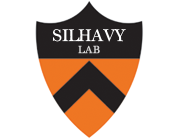Lambda placMu: a transposable derivative of bacteriophage lambda for creating lacZ protein fusions in a single step
Type
We isolated a plaque-forming derivative of phage lambda, lambda placMu1 , that contains sequences from bacteriophage Mu enabling it to integrate into the Escherichia coli chromosome by means of the Mu transposition system. The Mu DNA carried by this phage includes both attachment sites as well as the cI, ner (cII), and A genes. Lambda placMu1 also contains the lacZ gene, deleted for its transcription and translation initiation signals, and the lacY gene of E. coli, positioned next to the terminal 117 base pairs from the S end of Mu. Because this terminal Mu sequence is an open reading frame fused in frame to lacZ, the phage can create lacZ protein fusions in a single step when it integrates into a target gene in the proper orientation and reading frame. To demonstrate the use of this phage, we isolated lacZ fusions to the malB locus. These showed the phenotypes and regulation expected for malB fusions and could be used to isolate specialized transducing phages carrying the entire gene fusion as well as an adjacent gene (malE). They were found to be genetically stable and rarely (less than 10(-7] gave rise to secondary Lac+ insertions. We also isolated insertions into high-copy-number plasmids. The physical structure of these phage-plasmid hybrids was that expected from a Mu-dependent insertion event, with the lambda placMu prophage flanked by the Mu attachment sites. Lac+ insertions into a cloned recA gene were found at numerous positions and produced hybrid proteins whose sizes were correlated with the position of the fusions in recA.

